TV Review: Far from being too hard on Ian Paisley, BBC documentary was too gentle on the former DUP leader
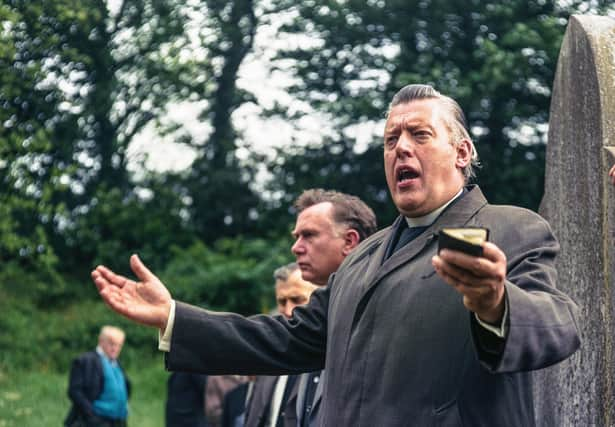

A few days after Episode One of The House of Paisley was broadcast Gregory Campbell MP told the Belfast Telegraph that he would be making a formal complaint to the BBC. In Campbell’s opinion the documentary was “totally biased” and gave the impression that the ‘Troubles’ was all Paisley’s fault. When I read this I wondered if we had watched the same programme. I wasn’t happy either but for very different reasons.
In my view Episode One of BBCNI’s The House of Paisley misrepresents the facts and with its slapdash approach to the archive it, at times, breaks BBC editorial guidelines. I’ll confine myself to the most egregious examples. But first, here’s the history.
Advertisement
Hide AdAdvertisement
Hide AdOn Monday 6 June 1966, the first day of the Presbyterian Church’s annual General Assembly, Rev Ian Paisley decided to protest against what he falsely claimed was the ‘Romanising tendency’ of the Presbyterian Church in Ireland. He marched from his church on the Ravenhill Road through the Markets area of Belfast, a predominantly Catholic neighbourhood, en route to Howard Street. The News Letter described his march as “coat-trailing of the most blatant kind”. The slogans on the marchers’ placards the News Letter said, “would antagonise most Protestants, let alone Roman Catholics”. His march, or procession, as Paisley described it at the time, did antagonise the Catholics and it was showered with bricks, bottles and iron bolts. Undeterred, Paisley and his followers were safely escorted by the RUC to Church House in Howard Street where the annual General Assembly of the Presbyterian church was in progress.
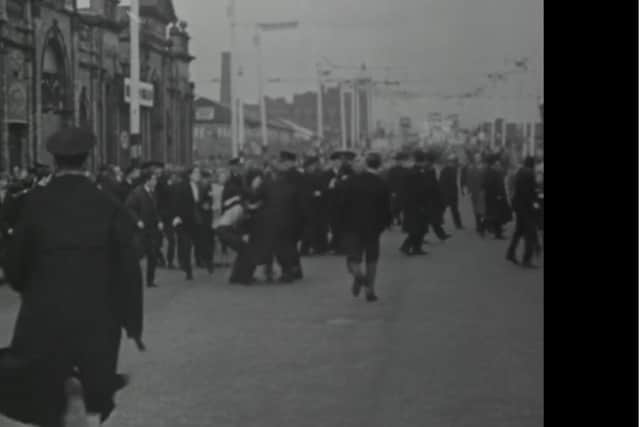

Outside the assembly, Paisley and his supporters with placards reading: ‘Jesuit Hurley teaches in Assembly’s College’, ‘Withers is a Pro-Papist’ and ‘Another Chapter in the Rome ward trend’ subjected the Governor of Northern Ireland Lord Erskine and his wife, several senior Presbyterian ministers and his nemesis at the Belfast Telegraph, the editor Jack Sayers, to a barrage of abuse. Seven weeks later Paisley and his colleagues were convicted at Belfast Magistrates Court. Each was fined £30 and given 24 hours to decide whether they would go to jail or pay the fine and be bound over to keep the peace for two years. Paisley, Wiley and Foster chose to go to prison. At a ‘religious’ rally following the court case Paisley taunted the police to arrest him. He was arrested at his home that night and brought to Crumlin Road jail under police guard.
The day after the disturbances, Prime Minister Terence O’Neill told the House of Commons at Stormont: “We must deplore a situation where the Queen’s representative, the Lord Chief Justice, the Moderator of the General Assembly and other persons deserving respect are treated with open public discourtesy." O’Neill was so incensed at Paisley’s outrageous protest that he dispatched the Minister of Home Affairs Brian McConnell to the General Assembly to apologise for the offence caused by the Paisley protest. No thought was given to the offence caused to the Catholic community in the markets. No unionist minister visited them to apologise for the disruption Paisley caused in their community. These are the facts as reported in the News Letter, so how did episode one of The House of Paisley retell the history of this event?
Eighteen minutes 53 seconds into the episode we come to the section on the Cromac Square riots of June 6 1966. The narrator, Joanne Crawford says: “Paisley took his pulpit onto the streets, leading a protest through a Catholic stronghold where no Protestant march had passed for over 30 years.” Then we watch Rev Ivan Foster reminiscing about that day in a rather jocular way. “I was in company with Dr Paisley; I was a student minister. I remember when we crested the hill on the bridge and looked down we could see there was quite a kerfuffle going on. But as we were going through a hail of everything came down: old railway bolts, bricks. I remember looking up and it was like looking into a snow storm.”
Advertisement
Hide AdAdvertisement
Hide AdThen a male BBC archive narrator says: “…when Free Presbyterians led by the Rev Ian Paisley were attacked…”; this comment is joined to Joanne Crawford’s script: “When police demanded their dispersal, threatening arrests, Paisley and his followers refused to back down choosing to suffer for their beliefs”. This is factually incorrect; the RUC did not demand they disperse. The News Letter reflected: “That the Free Presbyterians escaped manhandling was due solely to effective action by the police, not without cost to themselves.”
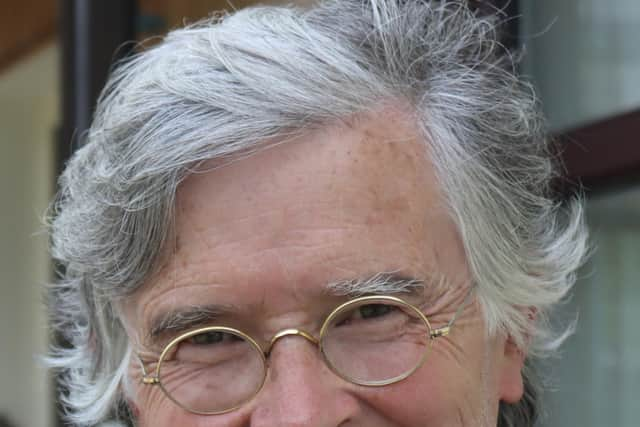

The film segues to old black and white archive of Paisley blaming the Roman Catholic Church and the Catholics of Cromac Square for the riots that his march provoked. Then Rev Foster’s voice comes in: “Well, the word went out: those men have got to be punished for that. And we were found guilty ... So after a few days we were taken to Crumlin Road.” Then we have archive footage of Paisley being driven in to Crumlin Road jail in a Ford car that was not in production in the summer of 1966.
This is all factually incorrect. They were not charged for provoking a disturbance of the peace in the Markets but for a breach of the peace outside the Presbyterian General Assembly and were jailed 45 days later. And Paisley didn’t drive himself to prison as the archive film suggests. He was arrested at home and taken there under police escort (there is other misleading footage, such as film of Paisley leading a protest on Royal Avenue, which was actually earlier, in Easter 1966).
Over the footage of Paisley being driven into Crumlin Road jail, the narrator Joanne Crawford says: “For Paisley, incarceration proved to be significant: his legend among Protestants was sealed. An outsider, persecuted by the establishment, and a martyr embodying courage and faithfulness.” Really? Are we being asked to believe that Protestants throughout Northern Ireland believed Paisley was a much maligned martyr? Protestantism in Northern Ireland was not homogenous: it was, and is, complex and fissiparous. Why did the programme not mention the disturbance at the Presbyterian General Assembly which caused a political hullabaloo in Belfast and London?
Advertisement
Hide AdAdvertisement
Hide AdA few days after the disturbances at Cromac Square and the General Assembly, the News Letter’s Ralph Bossence reflected on Paisley’s involvement. He wrote: “Mr Paisley has over reached himself in his latest tasteless and dangerous enterprise and has placed himself out of court with the great majority of the Unionist Party and the Protestant people of the Province”.
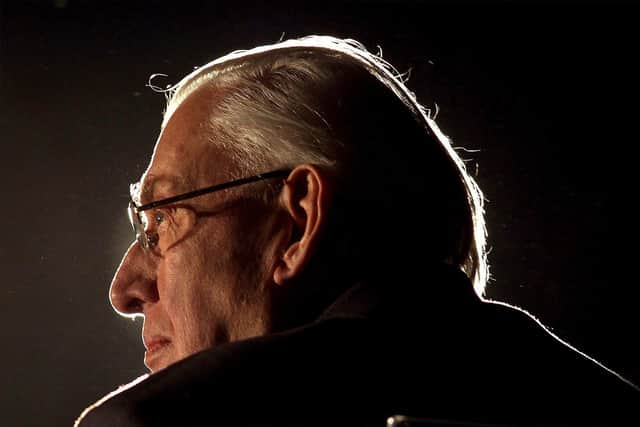

The first political murders occurred a few weeks later: Patrick Scullion, Peter Ward and Matilda Gould all killed by a newly reformed UVF. These incidents aren’t even mentioned in the programme even though one of the men convicted for the murder of Peter Ward is reputed to have said he regretted the day he had ever heard of Paisley. Indeed, Prime Minister Terence O’Neill revealed in Parliament that he had RUC intelligence that suggested a link between Paisley and the UVF.
My second concern is how the programme deals with the resignation of Prime Minister Terence O’Neill. Thirty-nine minutes and 29 seconds into the programme the narrator says: “Paisley intensified his campaign against O’Neill”. (archive shows a Paisley march probably from the February Elections of 1969). Then as the narrator says: “he blamed him for political instability on the streets”. Here the producers could have used archive from the People’s Democracy march from Belfast to Derry that took place during the first week in January 1969 but instead they chose the Battle of the Bogside from August 1969! This is a blatant abuse of the historical integrity of the archive and a breach of the BBC’s editorial guidelines. Then as the narrator says: “as the country descended into civic breakdown” we are presented with the Belfast Telegraph headline of April 28 1969 announcing O’Neill’s resignation. The narrator says: “O’Neill had no choice but to resign”. This is the BBC rewriting history. Northern Ireland was some months away from civic breakdown when O’Neill resigned.
In his autobiography O’Neill wrote that he was literally bombed out of office. The BBC did not explain to its viewers that the historical backdrop to O’Neill’s resignation was not “political instability on the streets” but several bomb explosions. On Sunday 20 April two large explosions shattered the main water pipe-line between the Silent Valley reservoir in the Mourne Mountains and Belfast. Four days later another explosion fractured the pipe line carrying water supplies from Lough Neagh to Belfast. Another explosion followed on the 25 April.
Advertisement
Hide AdAdvertisement
Hide AdPaisley’s Protestant Telegraph was quick to blame the IRA saying the “sheer professionalism” of the explosions indicated “the work of the well-equipped IRA” and were “an ominous indication of what lies ahead for Ulster”.
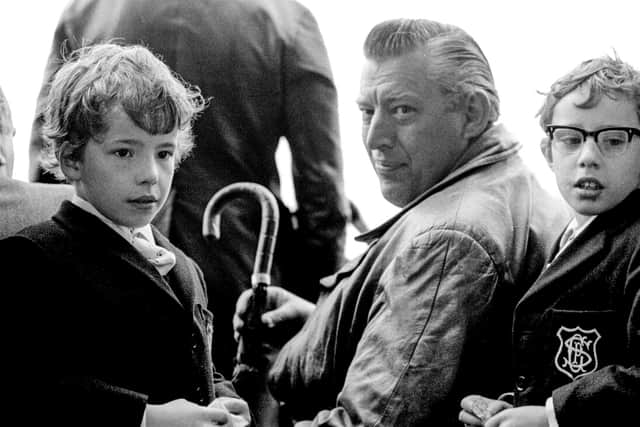

The mainstream media also blamed the bombings on the IRA but it later transpired the UVF was responsible and a documentary produced by the BBC in 2019 claimed to have evidence that Paisley financed the terrorist operation. But Paisley had achieved his objective: his counter demonstrations against the Civil Rights movement and the UVF bombs forced O’Neill to resign.
In one of the vox pops in episode one a woman states passionately: “Well as far as I can see it’s being going on this months, this years from when Mr Paisley came into the picture. He has stirred the Protestants up against the Catholics. For years they lived in peace but he couldn’t have that nor wouldn’t have that.”
This episode should have looked at Paisley’s pattern of behaviour in the years leading up to 1969 to see whether this woman, who was recorded a day or so after a Protestant mob burned Bombay Street, accurately reflected feeling at the time that Paisley did stoke up hatred between the two religious communities. As BBC NI’s former political editor Stephen Grimason said in the programme Paisley “was an arsonist who joined the fire brigade for the last few years of his life”. The BBC should have presented the evidence that sustains this view.
Advertisement
Hide AdAdvertisement
Hide AdCan Gregory Campbell look back at Paisley’s incendiary behaviour during the 1950s and 60s and say he did not stir up hatred between Catholics and Protestants? Who would dare say he was not a contributory factor to the conflict that spiralled out of control following the civil rights marches in 1968?
With this first episode BBCNI has undermined its reputation for producing historically accurate documentaries. This is a very serious matter: BBC documentaries are used as teaching resources; they shape the public’s view of the past. The next time BBCNI presents the public with a documentary on Paisley they should ensure it is thoroughly researched and based on historical fact. And please, treat the archive with respect!
• Patrick Speight is a former BBC Radio Presenter, reporter and producer. He presented Sunday Sequence from 1990-95, and produced A State Apart a CD-ROM archival history of the Troubles in 1998. He also produced websites on notable episodes in Irish History, including William 111, the Planation of Ulster, the Easter Rising, and the Good Friday Agreement